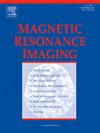Deep learning radiomics nomograms predict Isocitrate dehydrogenase (IDH) genotypes in brain glioma: A multicenter study
IF 2.1
4区 医学
Q2 RADIOLOGY, NUCLEAR MEDICINE & MEDICAL IMAGING
引用次数: 0
Abstract
Purpose
To explore the feasibility of Deep learning radiomics nomograms (DLRN) in predicting IDH genotype.
Methods
A total of 402 glioma patients from two independent centers were retrospectively included, and the data from center I was randomly divided into a training cohort (n = 239) and an internal validation cohort (n = 103) on a 7:3 basis. Center II served as an independent external validation cohort (n = 60). We developed a DLRN for IDH classification of gliomas based on T2 images. This hybrid model integrates deep learning features, radiomics features, and clinical features most relevant to IDH genotypes and finally classifies them using multivariate logistic regression analysis. We used the area under the curve (AUC) of the receiver operating characteristic (ROC) to evaluate the performance of the model and applied the DLRN score to the survival analysis of some of the follow-up glioma patients.
Results
The proposed model had an area under the curve (AUC) of 0.98 in an externally validated cohort, and DLRN scores were significantly associated with the overall survival of glioma patients.
Conclusions
Deep learning radiomics nomograms performed well in non-invasively predicting IDH mutation status in gliomas, assisting stratified management and targeted therapy for glioma patients.
深度学习放射组学图预测脑胶质瘤中异柠檬酸脱氢酶(IDH)基因型:一项多中心研究。
目的:探讨深度学习放射组学(DLRN)预测IDH基因型的可行性。方法:回顾性纳入来自两个独立中心的402例胶质瘤患者,I中心的数据按7:3的比例随机分为训练队列(n = 239)和内部验证队列(n = 103)。中心II作为独立的外部验证队列(n = 60)。我们开发了一种基于T2图像的神经胶质瘤IDH分类DLRN。该混合模型集成了深度学习特征、放射组学特征和与IDH基因型最相关的临床特征,并最终使用多变量逻辑回归分析对它们进行分类。我们使用受试者工作特征(ROC)的曲线下面积(AUC)来评估模型的性能,并将DLRN评分应用于部分胶质瘤患者的随访生存分析。结果:在外部验证的队列中,该模型的曲线下面积(AUC)为0.98,DLRN评分与胶质瘤患者的总生存率显著相关。结论:深度学习放射组学图在无创预测胶质瘤中IDH突变状态,协助胶质瘤患者分层管理和靶向治疗方面表现良好。
本文章由计算机程序翻译,如有差异,请以英文原文为准。
求助全文
约1分钟内获得全文
求助全文
来源期刊

Magnetic resonance imaging
医学-核医学
CiteScore
4.70
自引率
4.00%
发文量
194
审稿时长
83 days
期刊介绍:
Magnetic Resonance Imaging (MRI) is the first international multidisciplinary journal encompassing physical, life, and clinical science investigations as they relate to the development and use of magnetic resonance imaging. MRI is dedicated to both basic research, technological innovation and applications, providing a single forum for communication among radiologists, physicists, chemists, biochemists, biologists, engineers, internists, pathologists, physiologists, computer scientists, and mathematicians.
 求助内容:
求助内容: 应助结果提醒方式:
应助结果提醒方式:


